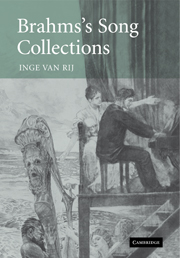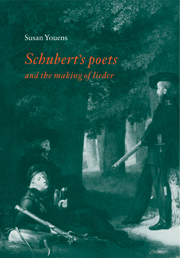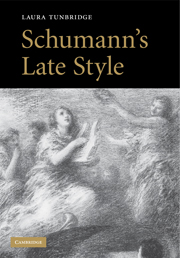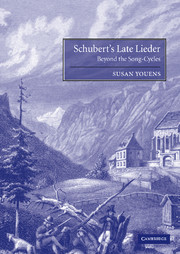Brahms's Song Collections
- Author: Inge van Rij, Victoria University of Wellington
- Date Published: October 2009
- availability: Available
- format: Paperback
- isbn: 9780521121828
Paperback
Other available formats:
Hardback
Looking for an inspection copy?
This title is not currently available on inspection
-
Brahms once complained that singers never performed his songs in the groups in which he had published them, which he likened to 'song bouquets'. Over a century later, many singers and musicologists continue to ignore Brahms's wishes and focus on the individual songs rather than the bouquet groups. This is a detailed study of the implications of Brahms's comments. Following an examination of contemporary aesthetic and generic frameworks, the book traces Brahms's Lieder from their conception, to the arrangement into bouquets, to performance and reception, and examines the sometimes contradictory roles played by poet, composer, performer and recipient in creating coherence in song collections. An investigation of the graphic cycles of Max Klinger reveals a startling visual analogue of Brahms's conception of the song bouquet, and a final examination of the evidence of Brahms's aesthetic outlook reveals that his intentions may have been cyclic in more than one sense.
Read more- Will be of interest to performers as well as musicologists
- An original analysis of the performance history and critical study of Brahms's Lieder
- Includes music examples and sixteen illustrations
Reviews & endorsements
Review of the hardback: '… it is a dense, detailed exploration of an essentially academic subject …' Classical Music
Customer reviews
17th Oct 2024 by UName-187600
Some quartets of Brahms were written definitly for Clara Wieck(Schumann). Brahms was madly in love with her and he showed in these quartets op.31, op.64, op.92 and op.112. I want to read more about it.
Review was not posted due to profanity
×Product details
- Date Published: October 2009
- format: Paperback
- isbn: 9780521121828
- length: 284 pages
- dimensions: 244 x 170 x 15 mm
- weight: 0.46kg
- availability: Available
Table of Contents
Introduction
Part I: Context
Organicism
Lyric cycles
Self-reflexivity, fragments, and Hoffmann's Kater Murr
Textual coherence in the song-cycle canon
Key sequence
Key characteristics and other alternative approaches to tonal sequence
Part II: Conception to publication
Before composing: texts and notebooks
From conception to arrangement: 'Heine cycles'
Ordering for publication
Titles and title pages
Flower imagery
Part III: Arrangement
Plot archetypes: sorrow to comfort
Narrative
Op. 32 as narrative
Op. 57 as narrative
Narrative elements in other bouquets
Self-reflexivity
Alternatives to narrative: juxtaposition and resonance
Tempo, closure, and cyclic patterning
'Wie Melodien'
Part IV: Performance
Performance contexts
Criteria in assembling a recital programme
Gender and dramatic characterisation
Identification between singer and narrator
Tessitura, range, and performance by several singers
Transposition
Performance and coherence in the Ophelia-Lieder
Part V: Reception
Reviews
Responses of Brahms's acquaintances
Identification of composer with narrator
Dedicatory cycles and the composer's voice
The graphic cycles of Max Klinger
Part VI: Cyclic Intent.
Sorry, this resource is locked
Please register or sign in to request access. If you are having problems accessing these resources please email [email protected]
Register Sign in» Proceed
You are now leaving the Cambridge University Press website. Your eBook purchase and download will be completed by our partner www.ebooks.com. Please see the permission section of the www.ebooks.com catalogue page for details of the print & copy limits on our eBooks.
Continue ×Are you sure you want to delete your account?
This cannot be undone.
Thank you for your feedback which will help us improve our service.
If you requested a response, we will make sure to get back to you shortly.
×








